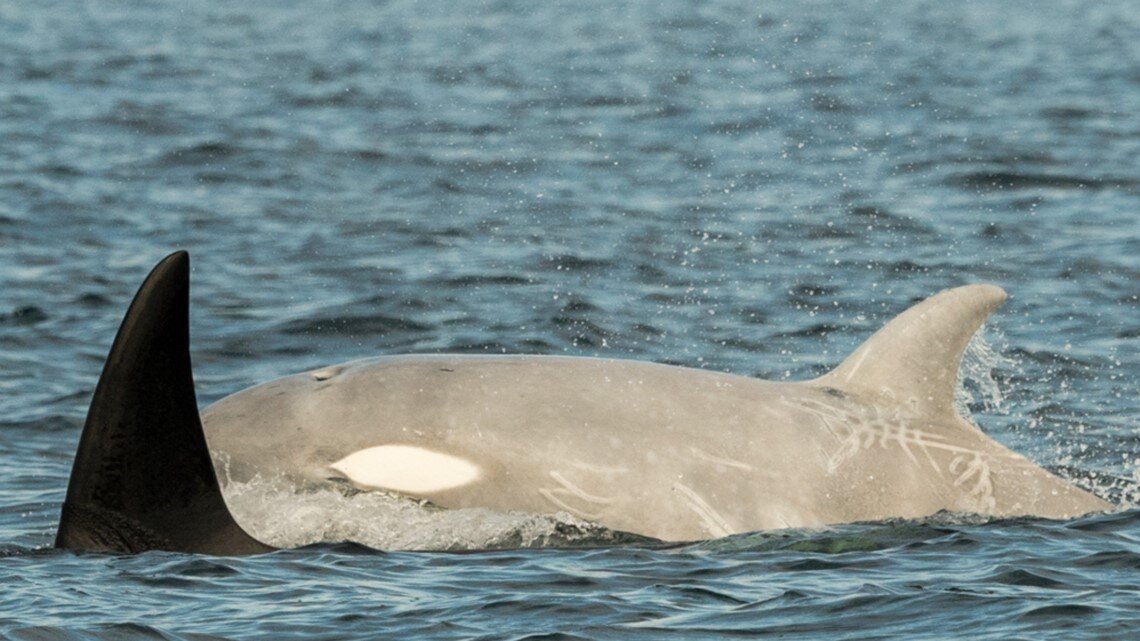White Killer Whales: What Are They?
White killer whales are becoming an increasingly common sight, with a number of the animals reported off the coast of Alaska and Russia in recent years. Iceberg, a 22-year-old male, became famous after appearing off the coast of Alaska, and was soon joined by more of these strange and rare white killer whales.
White killer whales, even if their numbers are increasing, are not a normal site. Far from the deep black skin of a typical killer whale, these white and pale creatures look almost ghostly and ethereal as they swim side-by-side with the pod.
So what exactly are these white killer whales, and why have they suddenly started appearing in the news?
Why Are Some Killer Whales White? - Are They Albino?
It’s not exactly clear as to why the orcas off Alaska are turning white. There are two known conditions to affect wild animals, including killer whales, that cause their skin to turn white in this way:
Leucism is a condition where the pigmentation of the skin is paler, turning closer to white but not completely. It differs from albinism, in which there is no pigmentation at all. It is clear from the images of Iceberg that these animals are not albino, as there are visible but faded markings. Albinism is also associated with eyesight issues, a problem these animals are not displaying.
Chediak-Higashi syndrome is an immune deficiency that can be inherited from parents in many species, including both orca and humans. The syndrome, along with other issues, can cause partial albinism, hence why it could be the cause of Iceberg’s faded markings.
Why Are White Killer Whale Sightings Increasing?
Researchers believe as many as eight white killer whales are living in the Northern Pacific between Alaska and Russia. This is an unusually high number of animals believed to have either a genetic defect or a skin condition. Such abnormalities occur everywhere in nature, but very rarely on this kind of scale.
What this likely points to is inbreeding between killer whale families in the region, passing on genes that would normally be lost and increasing the chance of white killer whales being born.
Inbreeding is not that uncommon with killer whales. Scientists have shown that killer whales in separate cultural groups, even if they live in the same regions, have distinct genetic makeups.
Killer whales are the only animals to have different genetics based on cultural groupings, except of course, for humans.
The cultural differences of killer whale groups usually mean that killer whales don’t breed with those outside their own communities, which thanks to their relatively small population sizes, results in inbreeding -- particularly near Russia where female orca are still captured for aquariums.
Higher levels of inbreeding thanks to these cultural barriers and lack of available breeding partners has meant that the gene causing white skin for these killer whales is being passed on to new generations.
Are White Killer Whales Sick?
That depends on what causes the white tint to their skin.
Scientists are yet to obtain samples of the population in the Pacific to determine the cause of their skin colour. If their condition is caused by leucism, then there is no reason to be concerned. While white skin colouring is usually considered a disadvantage in nature, as it makes the animal easier to spot, both in terms of prey avoidance and being hunted themselves, for killer whales this is not a problem.
Orca have no natural predators. As for being seen early by their prey, white killer whales are powerful and smart enough to hunt effectively even with this disadvantage. If they were to struggle, the pod the white killer whale belonged to would help them, as orca are known to share food with weaker and older members of their family group.
It is suspected that leucism is the cause of the white skin of these white killer whales, as Iceberg has reached maturity at a healthy size, suggesting it's not the other problem that once affected a captive orca called Chimo, which is Chediak-Higashi syndrome. An immune disorder, this usually means killer whales with the condition are in poor health and die young. Chimo only lived to age 4 despite female orcas being capable of living to 100.
Can You See a White Killer Whale?
Alaska is one of the best places to see wild killer whales. There is no guarantee you’ll see one of the white killer whales, but trips here offer you the best chance of catching a glimpse. Learn more about orca with our killer whales fact guide.


